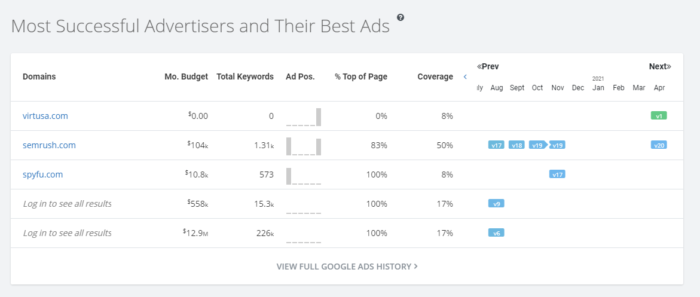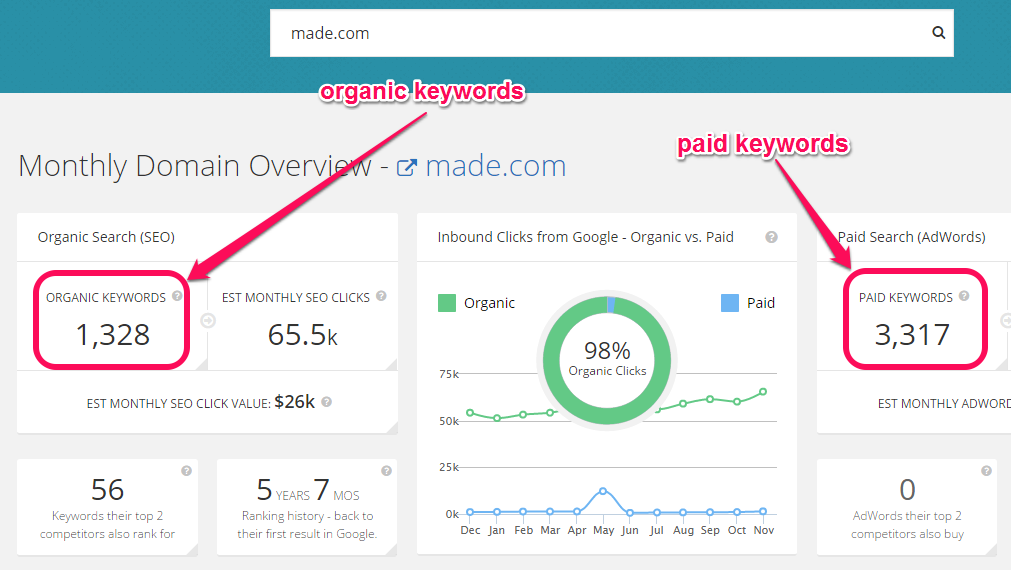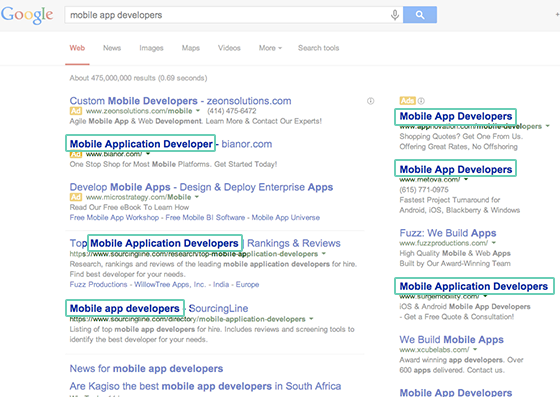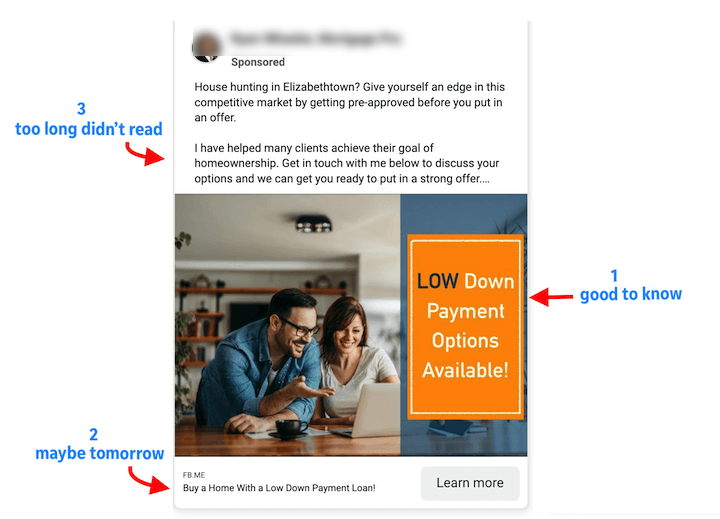In the competitive landscape of digital advertising, crafting compelling ad copy is essential for maximizing your return on investment (ROI). Paid advertising platforms like Google, Facebook, Twitter, and LinkedIn offer immense opportunities to reach diverse audiences.
However, the success of these campaigns depends on the creativity and strategy behind your ad copy.
This blog aims to share 12 proven ad copy strategies tailored for these platforms. By implementing these techniques, you can enhance your ad performance, increase brand awareness, and generate more qualified leads.
Google Ads Copy Strategies
Google Ads can deliver substantial returns when executed correctly. Research shows that for every $1 spent on Google Ads, businesses can generate an average of $2 in revenue.
However, achieving this potential depends on creating ad copy that communicates value clearly and persuasively.
1. Scan Competitor Ad Copy Using SpyFu

Understanding your competitors’ strategies can give you a significant advantage. Using tools like SpyFu, you can identify high-performing keywords and analyze the ad copy of both direct and indirect competitors.

Steps to Leverage SpyFu:
- Conduct keyword research to uncover terms competitors rank for.
- Review their ad performance metrics, such as click-through rates (CTR) and conversion rates.
- Identify recurring themes, CTAs, and unique selling propositions (USPs).
Application: Use these insights to craft persuasive ad copy that highlights your strengths and directly addresses gaps in your competitors’ messaging.
2. Obsessively Test Headlines

Headlines are the first thing users notice in an ad. A compelling headline can make or break your campaign’s success. Dynamic keyword insertion (DKI) is a powerful feature that ensures relevance by matching user search queries.
Examples:
- Effective: “We Buy Cars in 24 Hours” (clear, action-driven)
- Ineffective: “Fast Car Buyers” (vague, lacks specificity)
Tips:
- Avoid making promises you can’t deliver.
- Regularly A/B test different headlines to identify top performers.
3. Avoid Industry Jargon and Backup Claims

Ads overloaded with jargon can confuse your audience. Instead, focus on simple, impactful language. Support your claims with credible data to build trust.
Examples:
- Good: “Save 30% on Energy Bills with Our Solar Panels”
- Poor: “Revolutionize Your Energy Solutions” (too abstract)
Regularly update your ad copy to reflect the latest trends and maintain relevance.
Facebook Ad Copy Strategies
With over 2.8 billion monthly active users, Facebook offers unparalleled reach. However, this also means fierce competition. To capture attention, your ad copy must be concise, relatable, and visually appealing.
4. Include Social Proof
Social proof builds trust and credibility. Incorporating testimonials, customer numbers, or media mentions can significantly boost CTR.
Examples:
- RCA Victor’s Elvis album ad highlighted record-breaking sales, creating a sense of popularity.
- Ecwid’s ads used customer reviews to showcase the product’s reliability.
5. Communicate Value with Target Audience in Mind
Your ad copy should address your audience’s specific needs and preferences. Clear and direct communication resonates best.
Examples:
- AppSumo: “Get a Free Cheat Sheet to Skyrocket Your Sales”
- Anne Samoilov: “Discover How to Launch Your Online Course”
Adjust the tone and visuals based on the demographic you’re targeting to increase engagement.
6. Ask Questions and Use Emotions
Questions pique curiosity and encourage interaction. Emotional appeals can establish a connection and present your solution as the answer.
Examples:
- Question: “Struggling to Find Time for Fitness?”
- Emotional Appeal: “Finally, a Workout Plan That Understands You.”
Facebook’s official cheat sheet for ad copywriting can provide additional guidance on structuring ads effectively.
Twitter Ad Copy Strategies
With its concise format and active user base, Twitter is an excellent platform for targeted ads. However, the character limit requires you to communicate your message succinctly.
7. Avoid Overusing Hashtags
While hashtags increase discoverability, excessive use can clutter your ad copy and dilute your CTA. For promoted tweets, focus on a single, clear CTA to drive action.
Example:
- Good: “Download Our Free App Today. #Productivity”
- Poor: “#Download #App #Productivity #Tech” (overwhelming and distracting)
8. Be Succinct
Twitter’s format emphasizes brevity. Keep your messaging sharp and to the point.
Examples:
- Effective: “Boost Your Skills with Our Online Courses. Start Now!”
- Ineffective: “We offer various online courses to help you improve your skills…” (too lengthy)
9. Test Visual and Textual Balance
Visual elements complement your text and make your ad stand out. Ensure the visuals align with your message to reinforce your CTA.
Examples:
- An image of a person using your product alongside a direct CTA.
- Avoid cluttered visuals that distract from your message.
LinkedIn Ad Copy Strategies
Introduction to LinkedIn Ads
LinkedIn targets professionals, making it ideal for B2B advertising. To succeed, focus on delivering value-driven and industry-relevant messaging.
10. Craft Professional and Industry-Specific Headlines
Your headline should convey authority and expertise. Professionals trust ads that are clear and factual.
Examples:
- “Learn Data Analytics from Industry Experts”
- “Boost Your Team’s Productivity with Our Software”
11. Focus on Clear Value Proposition
Highlight the direct benefits of your product or service. Use concise and relatable language to address pain points.
Examples:
- “Save 10 Hours Weekly with Our Task Automation Tool”
- “Achieve Your Sales Goals Faster with Our CRM”
12. Leverage LinkedIn’s Unique Features
Take advantage of LinkedIn’s Sponsored Content, InMail, and Lead Gen Forms to create highly targeted campaigns.
Tips:
- Sponsored Content works well for increasing brand visibility.
- InMail allows personalized communication with potential leads.
- Lead Gen Forms simplify data collection for conversions.
Common Themes Across Platforms
- Testing and Optimization: Continuously refine your ad copy based on performance metrics.
- Consistency in Messaging: Ensure your message aligns with your audience’s intent.
- Data-Driven Decisions: Use analytics to guide your strategy and avoid making unsubstantiated claims.
FAQs
1. What is CTR, and why is it important in ad campaigns?
CTR, or Click-Through Rate, measures the percentage of users who click on your ad after seeing it. A high CTR indicates that your ad is engaging and relevant, leading to increased traffic and potential conversions. Improving CTR can lower your cost-per-click (CPC) and boost your ROI.
2. How does analyzing competitor ad copy help improve my campaigns?
Analyzing competitor ad copy using tools like SpyFu provides insights into their strategies, such as keywords, headlines, and offers that perform well. You can use this data to refine your own ads, create more persuasive content, and differentiate your brand.
3. What makes a headline effective in Google Ads?
An effective headline in Google Ads is clear, engaging, and relevant to the user’s search intent. Incorporating dynamic keyword insertion (DKI) ensures personalization, while avoiding industry jargon and using data-backed claims builds trust and drives clicks.
4. Why is social proof essential for Facebook ads?
Social proof, such as testimonials, user reviews, or media mentions, builds credibility and trust. It shows potential customers that others have benefited from your product or service, making them more likely to engage with your ad.
5. How can I create ad copy that resonates with my target audience on Facebook?
To resonate with your target audience on Facebook, focus on their specific needs and preferences. Use direct and relatable language, highlight the value your product offers, and tailor your visuals and tone to suit their demographics.
6. What role do emotions play in Facebook ad copy?
Emotions make your ad more relatable and impactful. By appealing to your audience’s feelings—such as excitement, curiosity, or empathy—you can establish a connection that encourages engagement and drives action.
Conclusion
These 12 ad copy strategies provide actionable steps to improve your CTR and ROI across Google, Facebook, Twitter, and LinkedIn.
By crafting clear, audience-focused, and data-driven ad copy, you can maximize your campaign’s potential. Start implementing these strategies today to see measurable results in your paid advertising efforts.
An avid blogger, dedicated to boosting brand presence, optimizing SEO, and delivering results in digital marketing. With a keen eye for trends, he’s committed to driving engagement and ROI in the ever-evolving digital landscape. Let’s connect and explore digital possibilities together.







